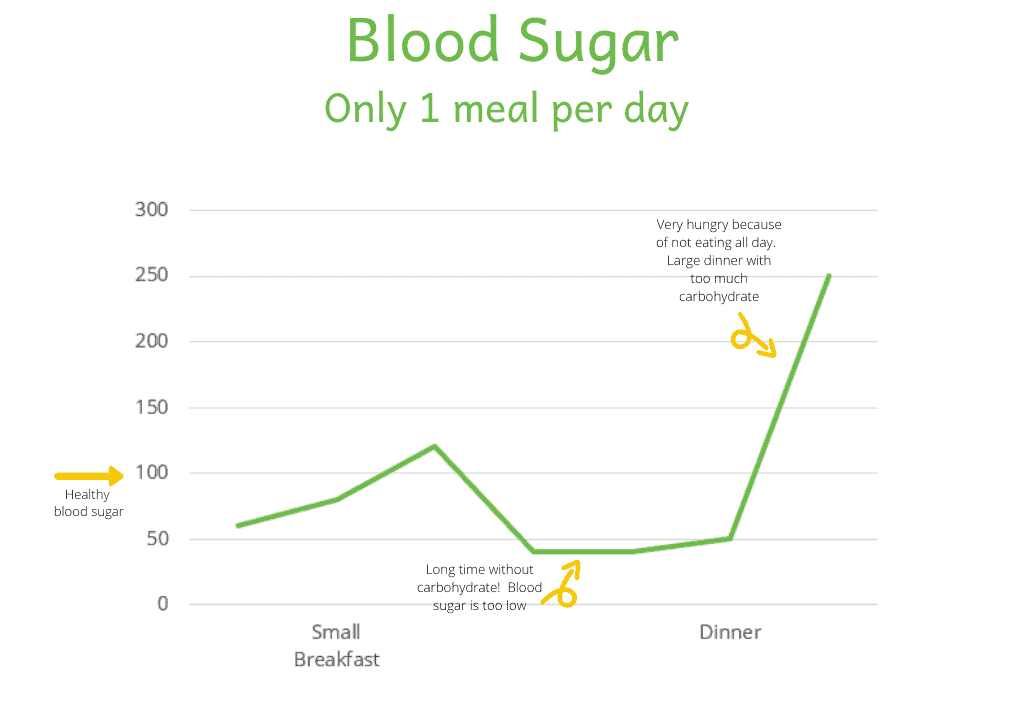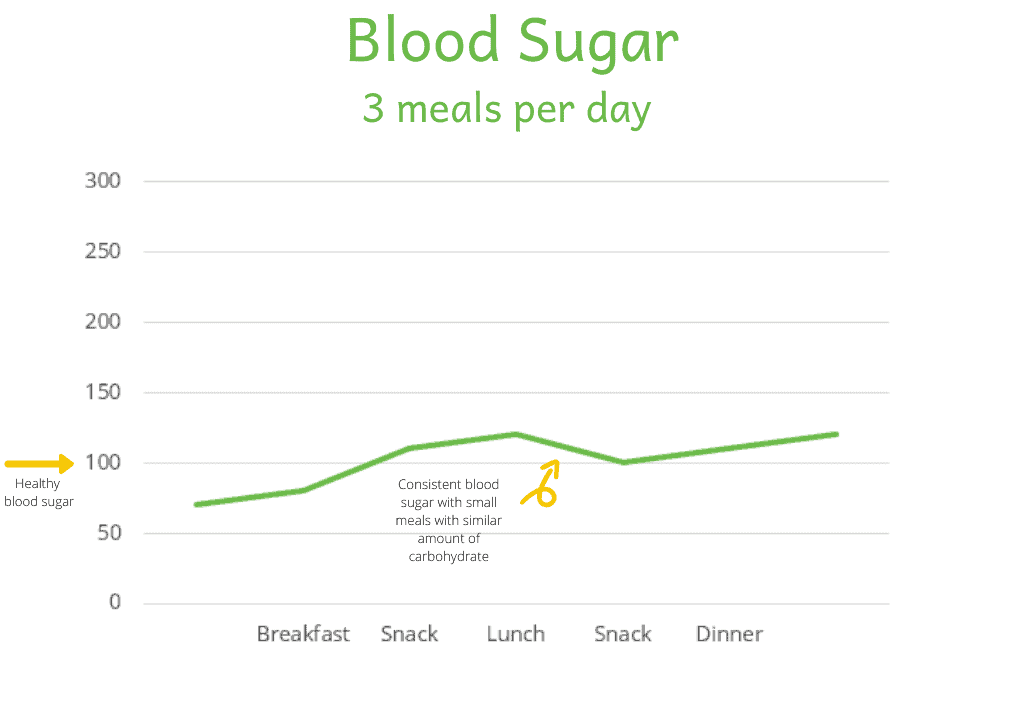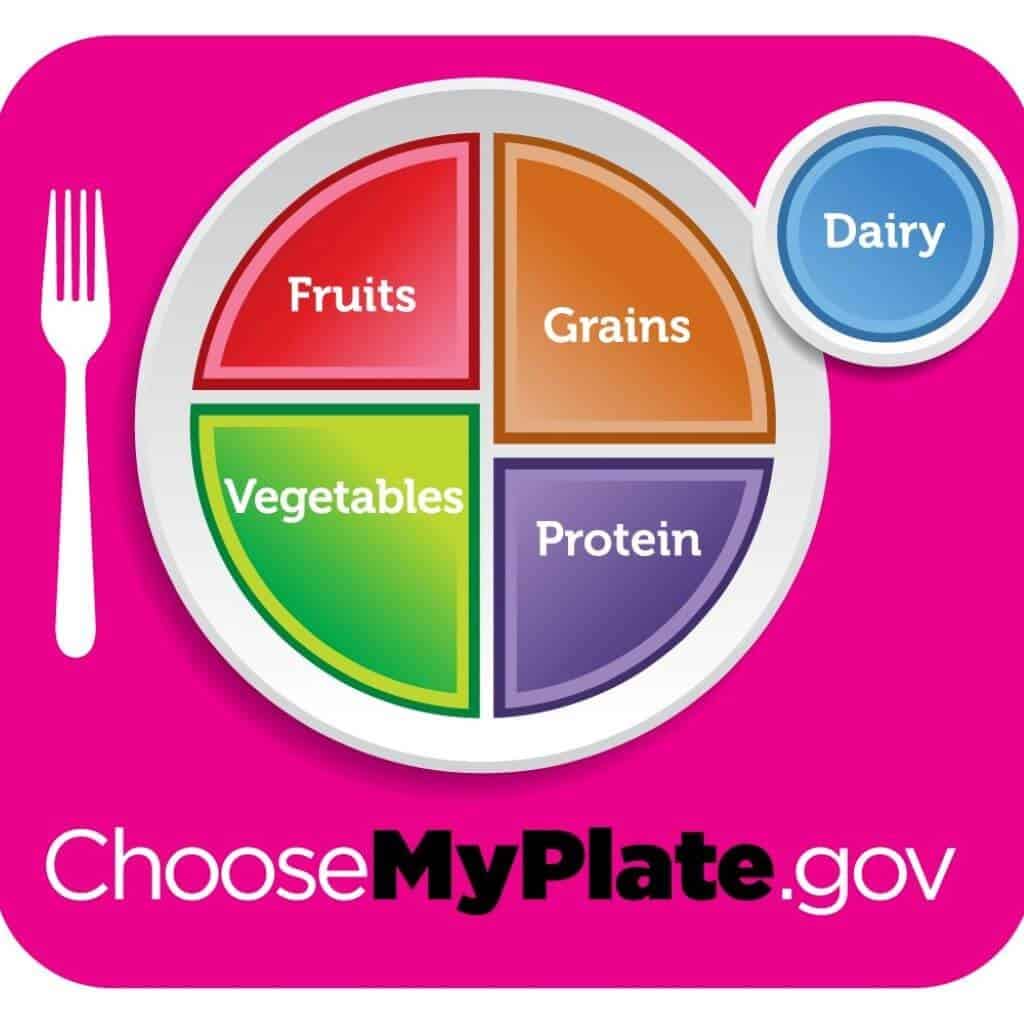Diabetic Dialysis Diet Food List
Navigating how to eat healthfully for BOTH diabetes and chronic kidney disease (CKD) can be overwhelming. It is easy to feel like there is absolutely nothing left to eat on a diabetic renal diet. Which is frustrating and not the case…I promise!
A healthy diet for kidneys and diabetes really isn't that complicated. Recommendations for kidney disease go right along with recommendations for diabetes. Don't believe me? Keep reading!
The Science
Diabetes
The goal for healthy eating for people with diabetes is to control blood sugar (or glucose). Any food that has carbohydrate in it will break down to glucose during digestion. So, any food that has carbohydrate has potential to raise your blood sugar.
Foods that have carbohydrate include:
- Starches (bread, pasta, rice, bread, cereals)
- Fruit (and fruit juice!)
- Dairy (milk and yogurt)
- Starchy Vegetables (corn, green peas, potatoes)
- Sugar (desserts, sugar sweetened drinks like soda, lemonade or sweet tea)
Good news! You CAN (and should!) eat foods with carbohydrate if you have diabetes. The key is portion size of foods with carbohydrate and to avoid too many of these foods in 1 meal1.
If you eat only 1 or 2 meals per day, you will eat more food at one time, which likely means eating too much carbohydrate at one meal. This large load of carbohydrate will break down into blood and cause a huge spike in your blood sugar. Also, especially for people who take insulin, going a long time without eating can cause blood sugar to go dangerously low.

Instead, our goal is to eat carbohydrate more consistently throughout the day. For most people, this means 3 meals per day with 1-2 snacks. Ideally, the amount of carbohydrate at each meal is the same. Most people should aim for 3-4 servings of carbohydrate at meals and 1-2 servings at snacks. These smaller loads of carbohydrate will cause small increases in blood sugar and help keep blood sugar steady in a healthy range.

One serving of carbohydrate is about 15 grams of carbohydrate. Check out the "Total Carbohydrate" line on Nutrition Facts Labels to determine how many servings of carbohydrate a food has.
Your dietitian will tell you exactly how many servings of carbohydrate are right for you based on your body, blood sugar history, insulin prescription and other medications.
Chronic Kidney Disease
The goal for healthy eating for kidney disease is to control the amount you eat of certain minerals and nutrients2. For example, diseased kidneys cannot get rid of phosphorus as well as they should. So, people with kidney disease should limit how much artificial phosphorus they eat.
People with kidney disease should limit sodium (or salt) to no more than 2,300mg per day2. A low sodium diet will help control blood pressure, which is very important as high blood pressure can hurt kidneys3. This is especially important because high blood pressure is both a symptoms and risk factor for kidney disease4. Edema (or fluid building up in the body in places like your ankles and calves) is common in kidney disease. A low sodium diet can help control edema and help people feel much more comfortable!
High protein diets have been associated with faster progression of kidney disease toward dialysis2,3,5. Our kidneys are responsible for getting rid of byproducts from the metabolism of protein (primarily acid), which makes them work harder. High protein diets can also contribute to symptoms of kidney disease such as acidosis and uremia.
Some people with kidney disease need to limit how much potassium they eat2. However, this is not the case for everyone! Learn more about potassium and kidney disease.
Going through all this science and which nutrients are important to avoid in kidney disease can be overwhelming. But, I have some good news! You CAN eat foods with these nutrients. Similar to diabetes and foods with carbohydrate, the key is portion size.
What to Eat on a Diabetic Renal Diet
Whew! Since we are through the science of healthy eating. Let's get to the good stuff. What should people with both kidney disease and diabetes eat!?
The answer for both really boils down to this: eat mostly vegetables and fruit, some protein and some healthy whole grain carbohydrates. Really! That's it!
Check out this table for more specifics about what foods are healthy to eat.
| Foods to Eat | Foods to Avoid | Portion Size & Comments | |
|---|---|---|---|
| Grains | Whole Grain Bread Brown Rice Whole Grain Pasta Non-Sugary Whole Grain Cold Cereals (bran flakes, wheat chex, etc.) Hot Cereals (oatmeal, cream of wheat) Corn tortillas | White bread White pasta Biscuits, cornbread Commercial breadcrumbs Flour tortillas Grains with "phos" ingredients | Kidney Disease: no strict limit on portion size. Diabetes: 1/2 cup or 1 slice = 1 serving of carbohydrate. |
| Dairy | Skim or low fat milk Soy and nut milks Low-fat or fat-free yogurt Low sodium cottage cheese Small amounts of natural cheese (cheddar, mozzarella, Swiss, etc.) | American cheese, Velveeta, nacho cheese Buttermilk Whole milk | Kidney disease: with advanced disease (GFR <20ml/min), consider limiting daily dairy to 1 serving per day or choosing rice milk instead of cow's milk. Diabetes: 1 cup of milk or yogurt = 1 serving. |
| Protein | Fresh meat, poultry, fish and seafood. Starchy beans (black, pinto, kidney, garbanzo beans) Lentils Unsalted nuts and seeds Low sodium canned fish Eggs | Deli or lunch meat Fried meats Processed meats (bacon, sausage, bologna, salami, corned beef, ham Products with "phos" ingredients | Kidney disease: limit animal proteins to 3-4oz or 1-2 eggs per meal. Consider choosing more plant-based proteins such as nuts, beans or lentils instead of animal proteins. Diabetes: 1/2 cup starchy beans or lentils = 1 serving carbohydrate. |
| Vegetables | |||
| Non-Starchy Vegetables | Low Potassium: asparagus, bell peppers, broccoli, cabbage, carrots, cauliflower, celery, corn, cucumbers, eggplant, green beans, kale, lettuce, mushrooms, okra, onions, spaghetti squash, turnips, yellow beans High Potassium: artichokes, avocado, beets, Brussels sprouts, greens, kohlrabi, spinach, tomato, zucchini Fresh or frozen vegetables are great choices! Low sodium or no salt added canned vegetables are great too! | Frozen vegetables with added cheese or sauce. Canned vegetables with salt | Kidney disease: if the amount of potassium in your blood is high, choose mostly low potassium vegetables. No strict limit on portion size. Enjoy lots of these! Diabetes: no strict limit on portion size. |
| Starchy Vegetables | Low Potassium: Turnips High Potassium: acorn squash, butternut squash, pumpkin, parsnips, rutabaga | Kidney disease: if the amount of potassium in your blood is high, choose mostly low potassium vegetables. No strict limit on portion size. Diabetes: 1/2 cup cooked or 1 cup raw = 1 serving of carbohydrate. | |
| Fruit | Low Potassium: apples, apricots, berries, cherries, cranberries, fruit cocktail, grapes, honeydew lemon, lemons, limes, peaches, pears, pineapple, plums, rhubarb, tangerines, watermelon High Potassium: bananas, cantaloupe, dates, figs, kiwi, mango, nectarines, papaya, pomegranate, prunes, raisins Fresh, frozen or fruit canned in "lite syrup" or "juice" are great choices! | Fruit canned in heavy syrup. | Kidney disease: if the amount of potassium in your blood is high, choose mostly low potassium fruits. No strict limit on portion size. Diabetes: 1/2 cup cooked or 1 cup raw = 1 serving of carbohydrate. |
| Fats | Olive or canola oil Small amounts of unsalted butter | Salted butter Coconut oil Lard | Kidney disease & diabetes: no strict limit. Generally try to include a little fat with each meal for flavor and to help you feel full! Aim for 1-2 teaspoons of fat with meals. |
| Dessert | Enjoy your favorite dessert in moderation! | Be mindful that ice cream and pudding are dairy desserts. If you have a GFR of less than 20ml/min, these would count as your dairy serving for the day. Commercially prepared desserts with "phos" ingredients | Kidney disease: enjoy your favorite desserts 1-2 times per week. Diabetes: 1/2 cup of ice cream/sherbet/sorbet, 2-inch piece of cake or 2 oreo-sized cookies = 1 serving of carbohydrate. |
| Condiments & Flavorings | Lemon, lime juice Pepper Dry or fresh herbs such as basil, oregano, parsley or cilantro Salt-free seasoning mixes such as Mrs. Dash Vinegar (white, red/white wine, balsamic, apple cider) | Large amounts of: Ketchup, mustard, BBQ sauce Gravy Soy or Worcestershire sauce Commercial salad dressing Salt, onion, salt, garlic salt Seasonings and condiments with "phos" ingredients. | Kidney disease & diabetes: no strict limit on portion size. All of the flavorings in the "foods to eat" column are freebies! Go crazy with them to add tons of flavor to your food! |
| Beverages | Water Diet clear sodas (7-Up, Sprite) Sugar-Free Flavorings (i.e Crystal Light) Unsweetened Iced Tea | Cola Drinks with "phos" ingredients. | Kidney disease: if the amount of potassium in your blood is high, avoid juices. Diabetes: 1/2 cup of any sugar sweetened drink (regular soda, juice, sweet tea, punch, lemonade) = 1 serving carbohydrate. |
| Work with your dietitian to determine how many servings of carbohydrate at meals is right for you if you have diabetes. Your dietitian can also help you figure out if you should be eating high or low potassium fruits and vegetables. | |||
Putting Together a Healthy Meal on a Diabetic Renal Diet
For a general guideline about what a healthy plate should look like, I love using the general recommendations from the USDA. You may have seen this image before, which provides guidelines on what healthy people should eat. The same is true for people with kidney disease and diabetes!

This graphic highlights the most important thing to remember when meal planning: make ½ of your plate fruits and vegetables. If you have diabetes, really focus on those non-starchy vegetables to avoid using up all your carbohydrate servings on fruit. Meals should also include some protein and some grain.
Diabetic Renal Diet Meal Ideas
You may be thinking: "Great, Melanie. I know I should eat more vegetables, but how can I make a meal out of those!" Here are some ideas for building a healthy meal that fits with making ½ of your plate vegetables along with a little grain and a little protein.
- Stir fry your favorite vegetables (I love broccoli, carrots, bok choy and onions) with a small amount of chicken or shrimp. Serve over brown rice or whole grain pasta.
- Stuff bell peppers with a mix of whole grains (try couscous, brown rice or quinoa) and veggies.
- Make pizza! Make your own whole grain pizza crust and top it with vegetables. My favorite veggie pizza toppings are zucchini, tomato, onion, mushrooms and arugula. Choose low sodium cheese such as fresh mozzarella or swiss and go easy on the sauce to avoid too much salt!
- Spice up your salad! Salads are the obvious way to eat your vegetables. Make them exciting! Add a little pasta to your salad. Throw on some toasted nuts or a little fancy cheese to make the salad extra special. I also love adding fruit to salads: try blueberries, strawberries, grapes or pineapple. Make your own dressing out of olive oil and flavored vinegar or lemon/lime juice. Or, you can even make your own ranch dressing!
- Try spiralizing. If you haven't jumped on the zoodle craze yet – try it! Spiralizing zucchini, yellow squash, sweet potatoes, beets or carrots is a fun way to prepare a vegetable heavy meal.
- Make a bowl. Top your favorite whole grain with tons of delicious vegetables and a little of your favorite sauce.
- Sneak veggies into breakfast. Never miss an opportunity to get in more vegetables! Mix 1-2 eggs with vegetables to make an omelet. Try a savory oatmeal. Or, try some (very trendy!) avocado toast by mashing 1/4-1/2 an avocado on whole grain bread and top it with some vegetables. My favorite toppings for avocado toast are chopped tomato and feta cheese. I also love pickled shallots and balsamic drizzle.
Check out my recipes for more meal ideas for people with kidney disease and diabetes.
Conclusion
Hopefully you feel less overwhelmed and have a better understanding of what youshouldbe eating. The same dietcanhelp slow the progression of kidney disease and control blood sugar.
Happy Eating!
Melanie
References
- Nutrition Overview | ADA. Accessed May 3, 2020. https://www.diabetes.org/nutrition
- NKF KDOQI Guidelines. Accessed April 18, 2020. https://kidneyfoundation.cachefly.net/professionals/KDOQI/guidelines_bp/guide_11.htm
- Kalantar-Zadeh K, Fouque D. Nutritional Management of Chronic Kidney Disease. N Engl J Med. 2017;377(18):1765-1776. doi:10.1056/NEJMra1700312
- Judd E, Calhoun DA. Management of Hypertension in CKD: Beyond the Guidelines. Adv Chronic Kidney Dis. 2015;22(2):116-122. doi:10.1053/j.ackd.2014.12.001
- Jhee JH, Kee YK, Park S, et al. High-protein diet with renal hyperfiltration is associated with rapid decline rate of renal function: a community-based prospective cohort study. Nephrol Dial Transplant Off Publ Eur Dial Transpl Assoc – Eur Ren Assoc. 2020;35(1):98-106. doi:10.1093/ndt/gfz115
Diabetic Dialysis Diet Food List
Source: https://www.thekidneydietitian.org/diabetic-renal-diet/